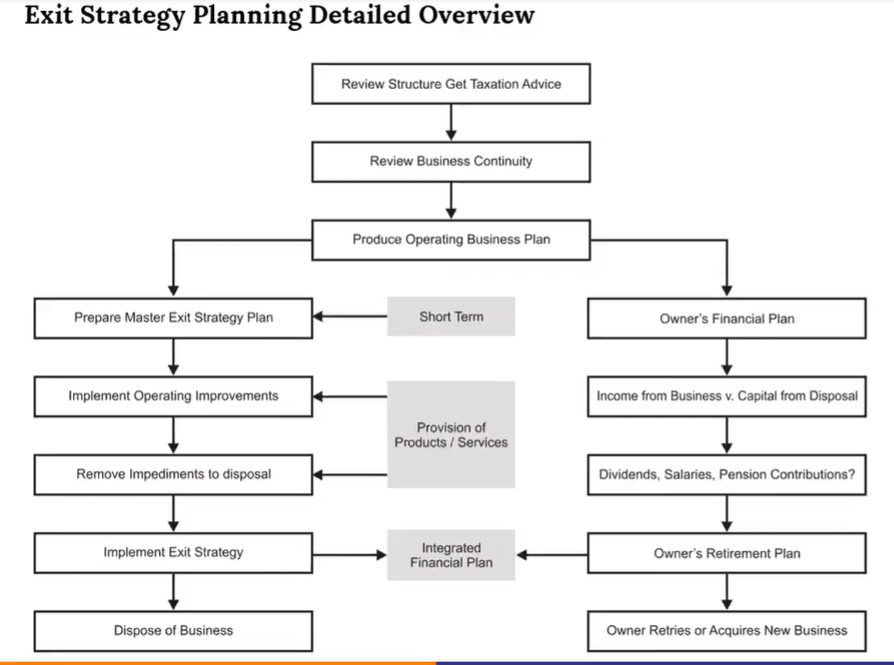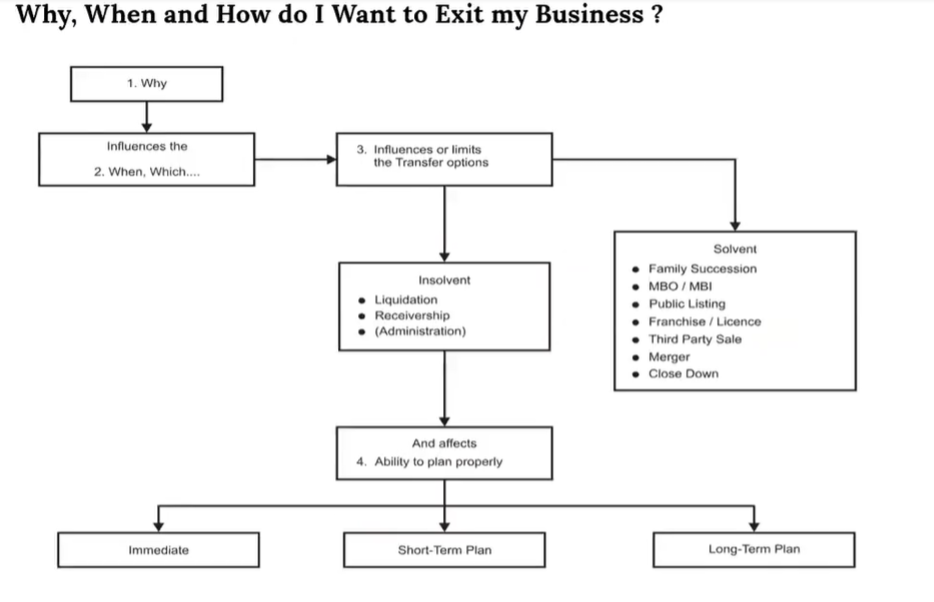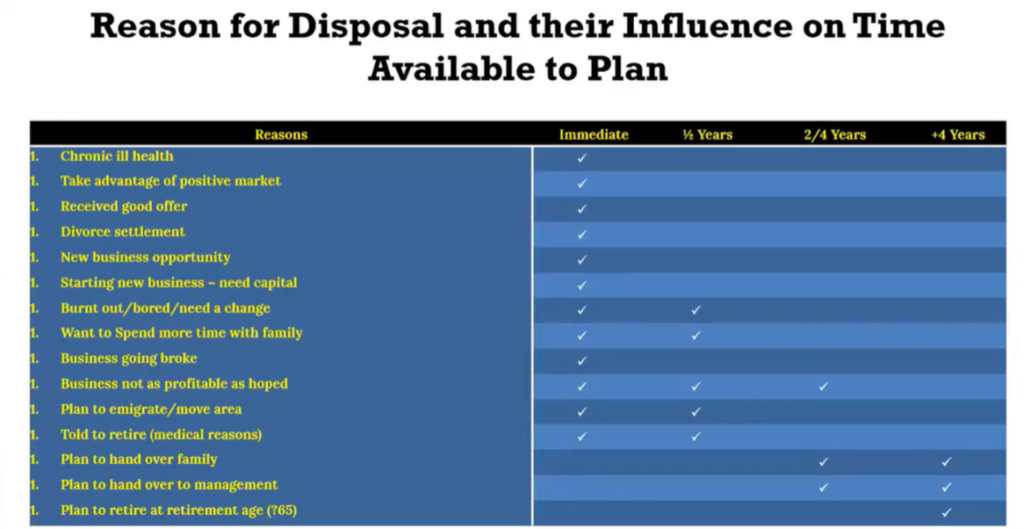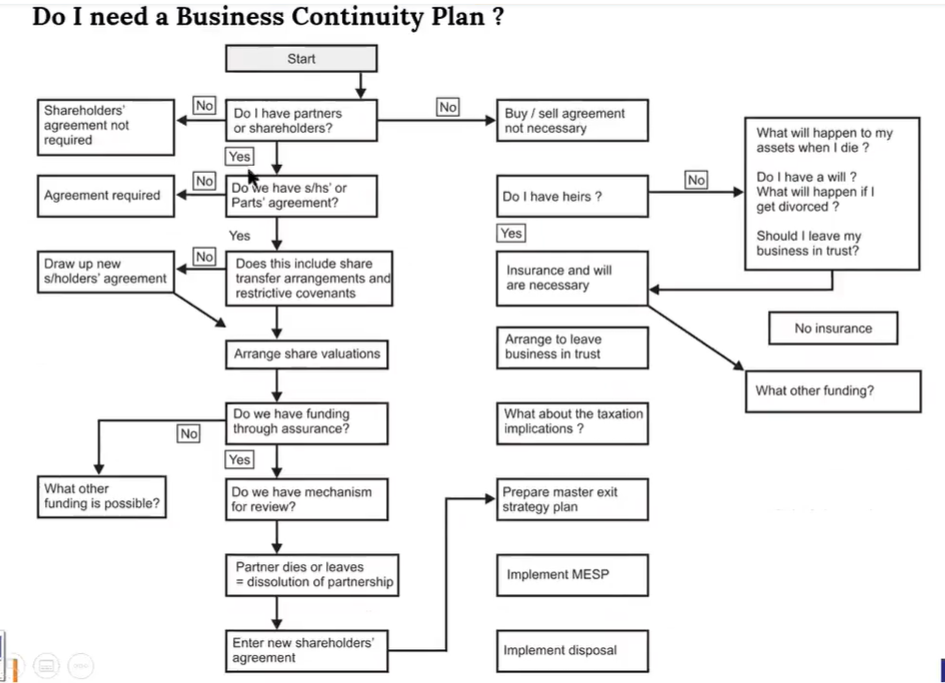Failing to plan your exit isn’t just an oversight—it can jeopardize the very value and legacy you’ve built. For Bengaluru’s business leaders, HNIs, and family patriarchs, an exit strategy is a process, not a one-time event. Ideally, it begins the day you open your doors—but “someday” often arrives sooner than expected.
The High Cost of “Someday” Planning
- Sub-Maximal Sale Price: Without the right preparation, buyers won’t pay full market value for your enterprise.
- Unprepared for Due Diligence: Surprises in your financials, contracts, or legal structure erode trust and leverage.
- Tax Inefficiencies: Poor timing or structure can balloon tax liability—diminishing your personal retirement funding.
- Emotional Regret: Years of hard work can end in frustration if you exit with less than you deserve or envisioned.
First: Business Exit Strategy Planning Overview
Exit Planning Steps
- Decide Your Time Frame
- Immediate liquidity? 3–5 years? 10+ years?
- Choose the Optimum Exit Option
- Sale to third party, management buyout, ESOP liquidity event, IPO, merger, wind-down.
- Structural & Tax Planning
- Entity restructuring, holding-company creation, valuation readiness, continuity carve-outs.
- Groom Successor or Management
- Leadership pipeline, mentorship, formal roles, external hires if needed.
- Remove Impediments
- Clean up litigation, normalize contracts, resolve shareholder disputes.
- Disposal Preparations
- Data room creation, audited financials, management presentations.
- Integrate Personal & Business Plans
- Align your retirement cash-flow needs with projected sale proceeds and tax timing.
- Execute the Disposal
- Negotiation, SPA signing, closing, hand-over and escrow arrangements.
Detailed Exit Strategy Overview

Why, When & How Do I Want to Exit?

Reasons for Disposal & Time Available to Plan

Key Questions to Ask
- Market Conditions: What multiples are buyers paying today in your sector?
- Economic & Industry Trends: Is your industry consolidating or fragmenting?
- Tax Implications: What tax rates apply now vs. if you wait 2–5 years?
- Operational Readiness: Are there legacy issues (leases, licensing, debt) depressing value?
- Shareholder Alignment: Do fellow shareholders support the timing and method of exit?
- Key Management Retention: Will your leadership team stay on post-deal?
Second: Business Continuity Planning
Even if you’re exiting, the continuity of value—during sale or transition—matters hugely. Two foundational decisions:
- Corporate Structure for Exit Effectiveness
- Should you reorganize into a holding-company structure, separate operating and real-estate assets, or spin off divisions?
- Formal Agreements for Smooth Separation
- Shareholders’ agreements, employment covenants, IP assignment deals, and non-compete clauses.
Entity Structuring Matters
Choosing the right entity is as critical as choosing your successor. Structure affects:
- Tax Efficiency: Pass-through vs. corporate taxation of sale proceeds.
- Liability Shielding: Protects personal and family assets from creditor claims.
- Transfer Simplicity: Facilitates share transfers or asset sales without complex regulatory hurdles.
Common Entity Types in India
- Sole Proprietorship
- General Partnership
- Limited Liability Partnership (LLP)
- Private Limited Company
- Public Limited Company
Tip: For a seamless exit to heirs or third parties, a pass-through entity (LLP or Private Ltd) often minimizes tax drag and regulatory burdens.
Do You Need a Business Continuity Plan?

If you plan to exit, sell, or transition at any point, a continuity plan is non-negotiable. It ensures:
- Operational Resilience: Key customers, contracts, and processes remain intact.
- Leadership Preparedness: Successors can execute without a steep learning curve.
- Value Preservation: Prevents value leakage between “decision to sell” and “deal close.”
Final Thoughts
A robust exit strategy isn’t a luxury—it’s the capstone of decades of hard work. Start today: align your exit timeline, entity structure, management development, and personal financial goals into a cohesive plan.
Ready to secure your legacy?
Call/WhatsApp: +91 97436 83444
Email: sandeep@sandeepnsetty
Meet for Tea/Coffee in Bengaluru to craft your bespoke exit and continuity roadmap.

